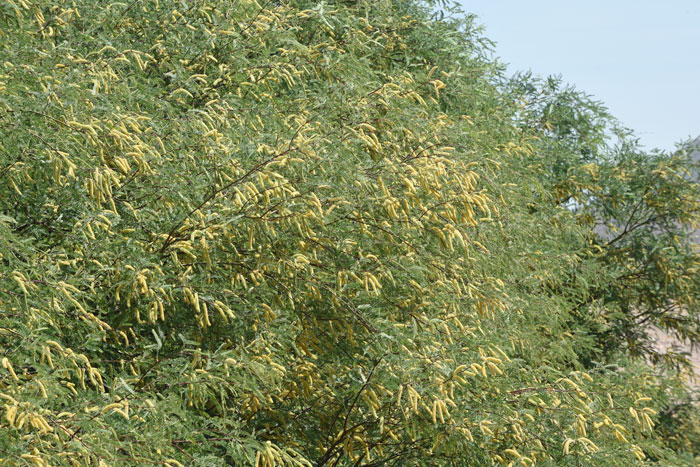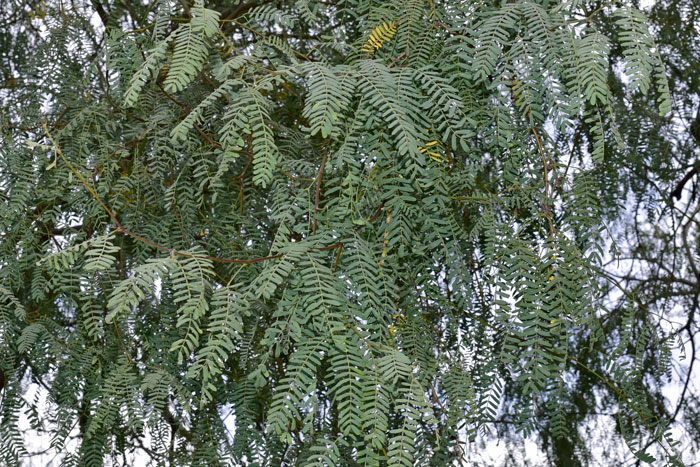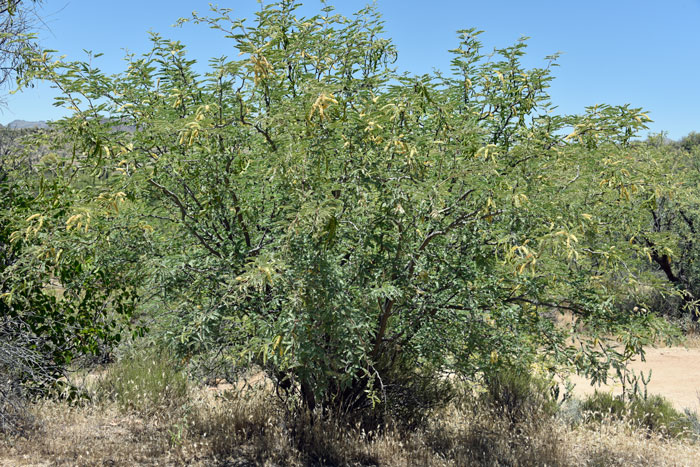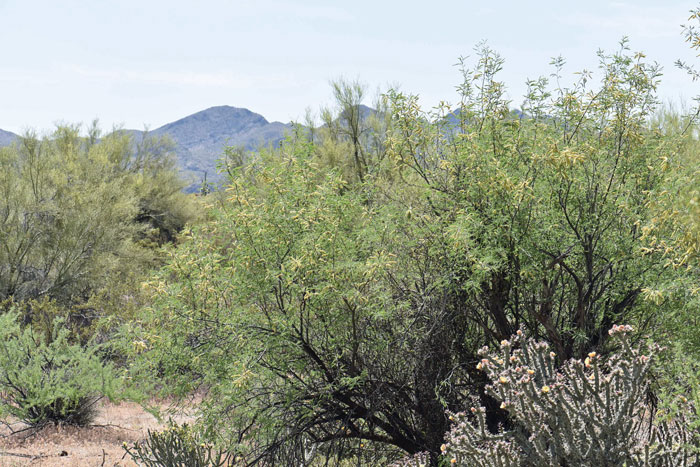Prosopis juliflora var. torreyana, Western Honey Mesquite




Scientific Name: Prosopis juliflora var. torreyana
Common Name: Western Honey Mesquite
Also Called: Common Mesquite, Honey Mesquite (Spanish: Mezquite, Algarroba, Chachaca)
Family: Fabaceae or Leguminosae Family
Synonyms: (Prosopis glandulosa subsp. torreyana, Prosopis glandulosa var. torreyana, Prosopis odorata)
Status: Native
Duration: Perennial
Size: Up to 30 feet or more.
Growth Form: Tree or shrub; spiny branches arched and drooping, stems somewhat zigzag, crown spread often wider than height, trunk diameter up to 2.5 feet.
Leaves: Green; pinnately compound, generally glabrous.
Flower Color: Yellow, light yellow; inflorescence in catkin-like spikes, fruit a legume, pods narrowed slightly between seeds, generally glabrous.
Flowering Season: March to August.
Elevation: Up to 5,000 feet.
Habitat Preferences: Drainage ways in the Mojave and Sonoran Deserts.
Recorded Range: In the United States, Western Honey Mesquite is found in the southwest in the states of; AZ, CA, NM, NV, TX and UT. It is also native to Baja California and central and northern Mexico.
North America species range map for :
North America & US County Distribution Map for Prosopis juliflora var. torreyana as Prosopis juliflora.
U.S. Weed Information: Unknown
Invasive/Noxious Weed Information: All members of the genus Prosopis are listed as a Noxious Weed by the state of Florida.
Wetland Indicator: Unknown
Threatened/Endangered Information: Arizona Western Honey Mesquite is "Salvage Assessed", "Harvest Restricted". A permit is needed from the Department of Agriculture to transport this species off of private land.
Genus Information: 35 species in Prosopis in the southwestern United States. 3 native species in Arizona.
The Plant List includes 111 scientific plant names of species rank for the genus Prosopis. Of these 46 are accepted species names.
Comments: Western Honey Mesquite is more often found in washes and other drainage ways where water is or has been during the year. Vegetative communities include the Blue Palo Verde, Quail Bush, Desert Willow, Fremont Cottonwood, Saltcedar and Goodding Willow.
All species of Mesquite make excellent firewood and their branches have been used as wood used for fence-posts. The flowers provide an important source of nectar for desert honey-bees, wildlife and livestock eagerly eat the leaves and pods. Pollen from all species are reported to be responsible for hay-fever.
In Southwest Desert Flora also see: Honey Mesquite, Prosopis glandulosa; Screw Bean Mesquite, Prosopis pubescens and Velvet Mesquite, Prosopis velutina.

